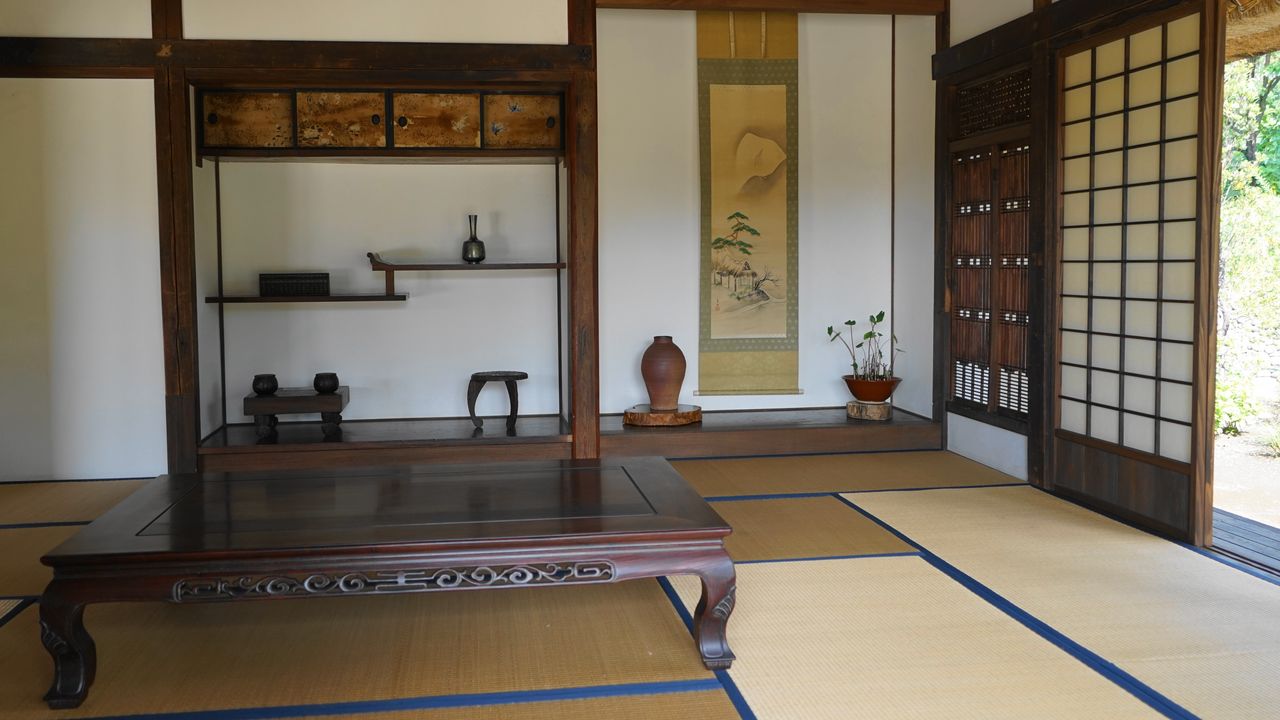
A Basic Guide to Japanese Etiquette
Place of Honor: Seating Etiquette in Japan
Guideto Japan
Lifestyle Culture Education- English
- 日本語
- 简体字
- 繁體字
- Français
- Español
- العربية
- Русский
Top and Bottom Seats
Etiquette decides where individuals sit, based on seniority, in many situations around the world. In Japan, the kamiza/jōza or “top seat” is reserved for the most senior person in a party, with the most junior occupying the shimoza/geza “bottom seat.” Given the particularly strong emphasis on hierarchy in this country, here are some tips for avoiding seating etiquette faux pas.
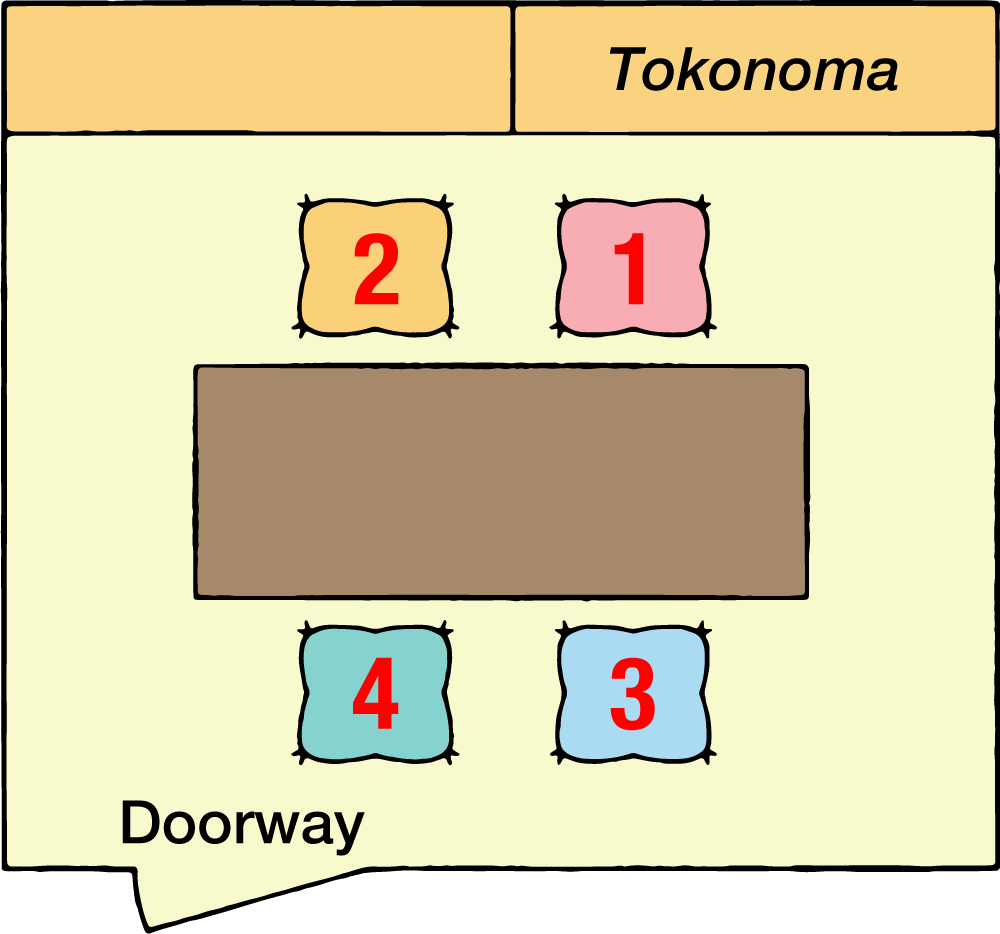
The basics: The most important person sits in front of the tokonoma (ornamental alcove) and the least important near the doorway. (© Pixta, edited by Nippon.com)
Whether the room is Western- or Japanese-style, the top seat is the farthest inside the room. The seat nearest the doorway is for the most junior member of the party, to facilitate that person’s delivering refreshments or placing an order with the server, or in the case of a business meeting, darting out to make copies if necessary.
In traditional residential architecture, the tokonoma marks the spot where the most senior person will sit. Reception rooms in samurai residences from the medieval period to early modern times featured a tokonoma, in front of which a guest would be seated. If the master of the house was receiving lower-ranking individuals, he was the one who would take a seat in front of the tokonoma. This was at a time when relationships between superiors and inferiors were being codified: rules relating to kamiza and shimoza were intended to firmly establish differences in rank.
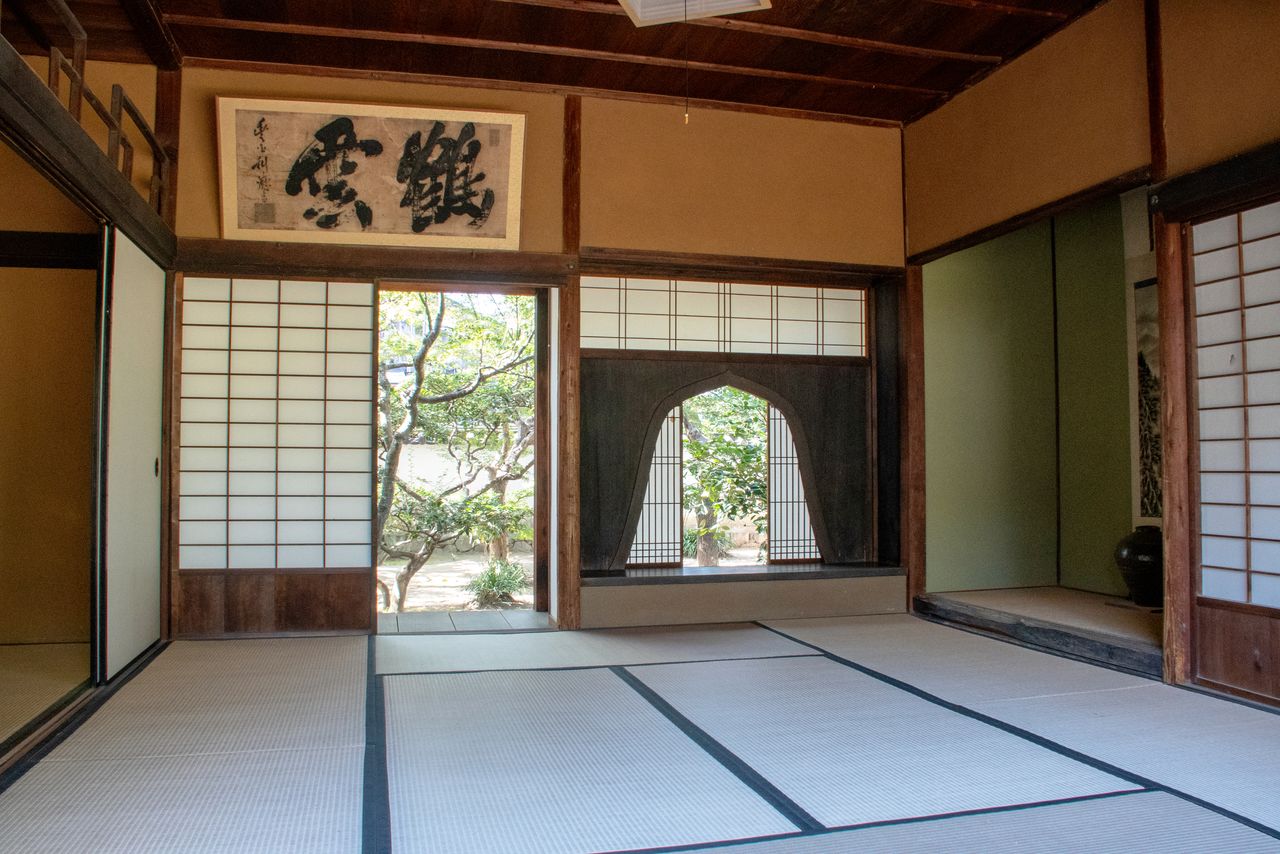
In the shoin style of traditional architecture, a writing desk with an oriel window is adjacent to the tokonoma. This is a room in the former Ashimori samurai residence, erected sometime during the seventeenth to eighteenth century, located in Okayama, Okayama Prefecture. (© Pixta)
The tokonoma is often decorated with a hanging scroll or a flower arrangement. Some sources claim that this alcove was originally meant to house a Buddhist statue or altar. Since it was viewed as a sacred space, the area in front of it was designated as the place of honor.
When several people are to be seated, the left-hand side ranks higher in the seating order of precedence. Seen from the kamiza position, the next-highest-ranking guest sits to the left, with the third-ranking person to the right.
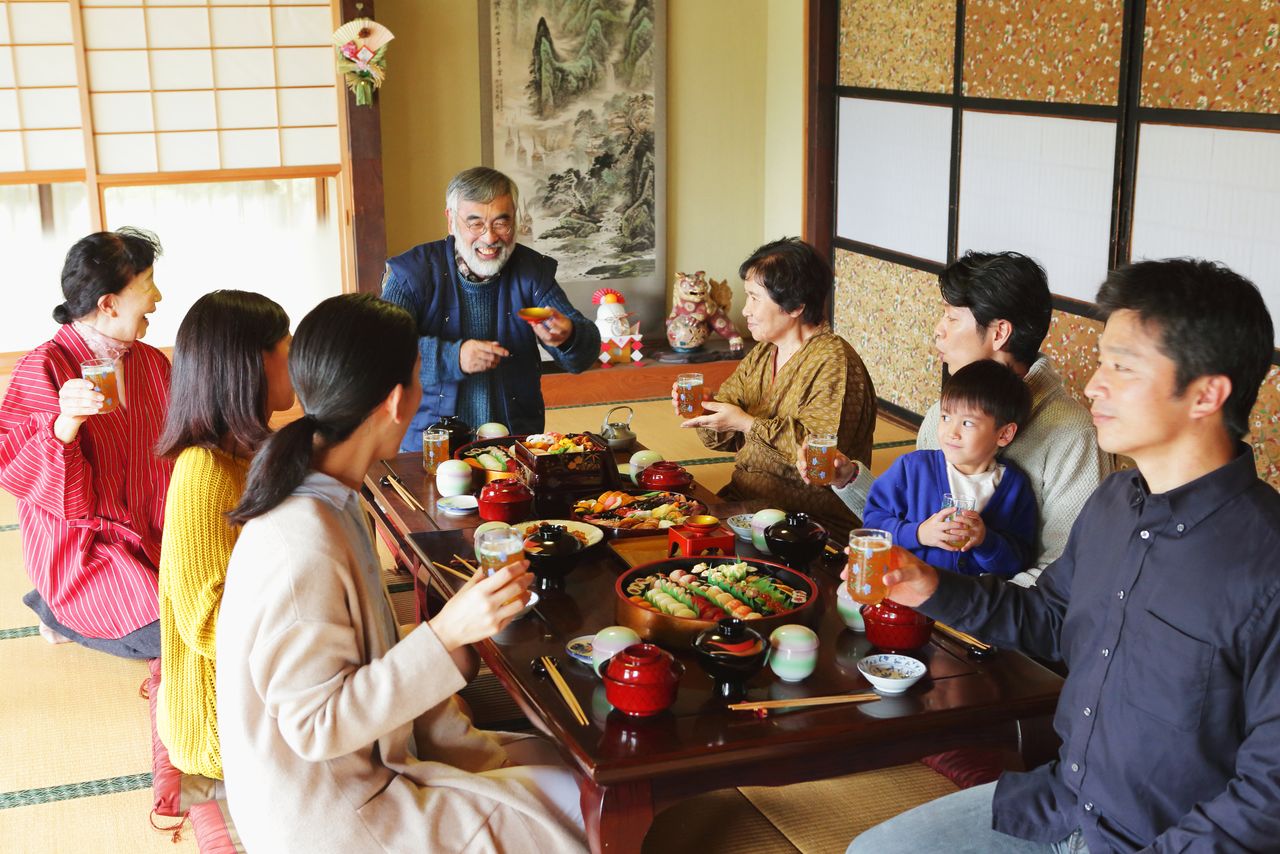
When families gather, the patriarch occupies the farthest-most seat, and the seating order of precedence, as seen from the head of the table, is left, right, and left. (© Pixta)
There can be some deviation from the rules, however. When several guests are being entertained, they can take the places on the top seat side, with the hosts lined up across from them. It is also fine for the highest-ranking individuals in the guest and host parties to occupy the respective center seats on each side.
The size and shape of the table and the spacing between seats may also influence seating order. Seating arrangements can be decided to suit the circumstances, but guests should not be made to feel uncomfortable or cramped.
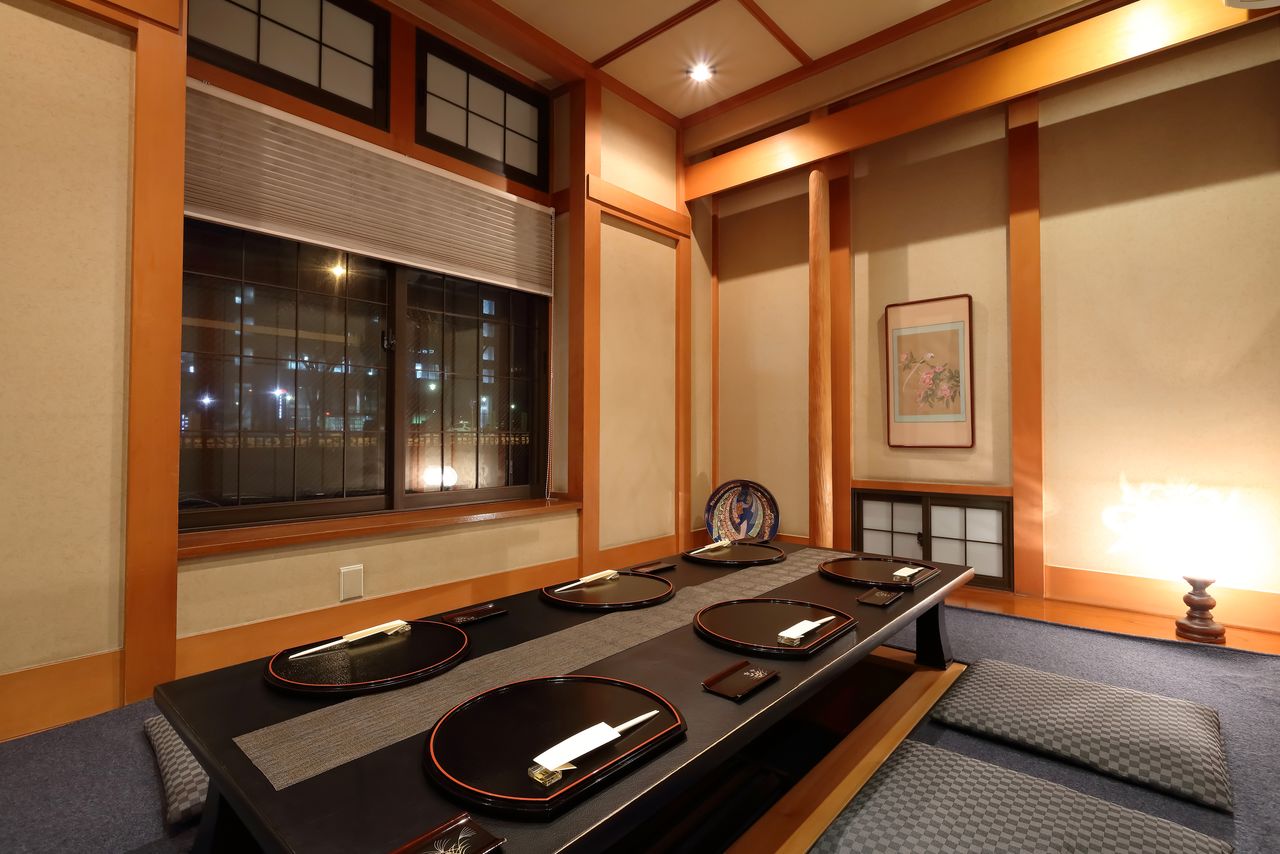
When entertaining in this type of tatami room, the most practical arrangement is to seat guests with their backs to the wall on the far side of the room. (© Pixta)
Holdover from the Imperial Court?
The rule of the left taking precedence dates back to the Heian period (794–1185) when at the imperial court, the minister of the left was the most senior minister, ahead of the minister of the right. This practice derived from the political ideology that the emperor was the lodestar facing south over the populace he was tasked with protecting. Viewed from that perspective, the morning sun rose from the auspicious direction of the east to the emperor’s left, which was thus considered the more prestigious side.
However, in modern times the imperial house adopted the Western practice of giving priority to the right. At official functions where the imperial family wear Western dress, the emperor or the crown prince sits to the right of the empress or the crown princess. This practice has even spilled over into the realm of hina dolls, displayed for Hinamatsuri on March 3. In Kyoto, hina dolls were traditionally arranged with the male doll to the left and the female doll to the right, but nowadays the dolls’ positions are reversed and follow the Western-style rule throughout most of the country.
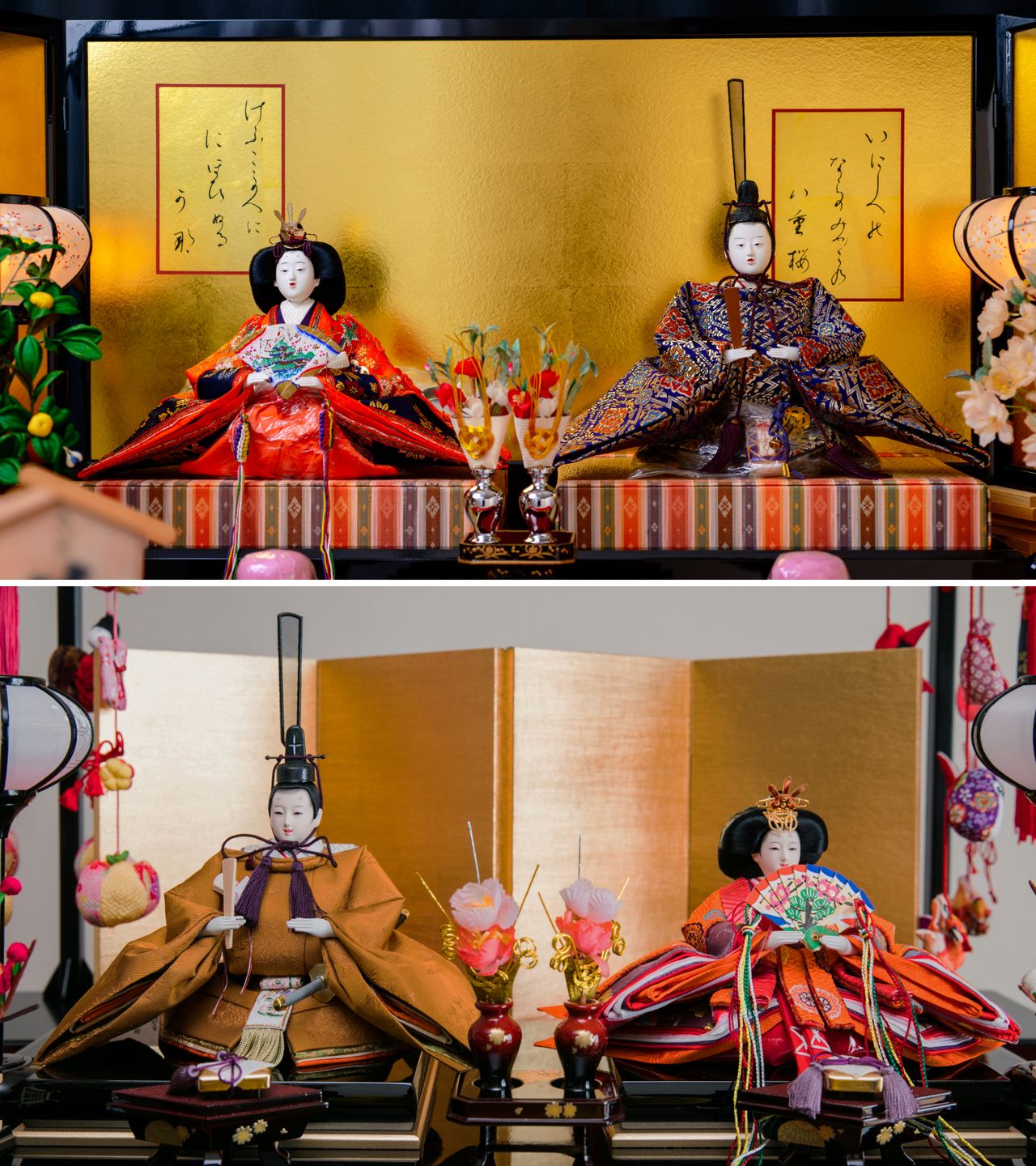
Hina dolls displayed in traditional Kyoto style, with the male doll on the left (top). Nowadays, this positioning is usually reversed. (© Pixta)
Western-Style Rooms
In the West, tradition dictated that guests be seated in front of the fire, where it was warmest. The mantlepiece above served as a display space for photos or decorative objects. When the room had no mantlepiece, a decorative shelf substituted, with the best seat in the room placed in front of it.
An office reception room often has a picture on the wall. Guests are seated opposite, where they can enjoy the art as a gesture of hospitality. The same applies when a window offers pleasant scenery; guests are seated opposite the window so that they can enjoy the view.
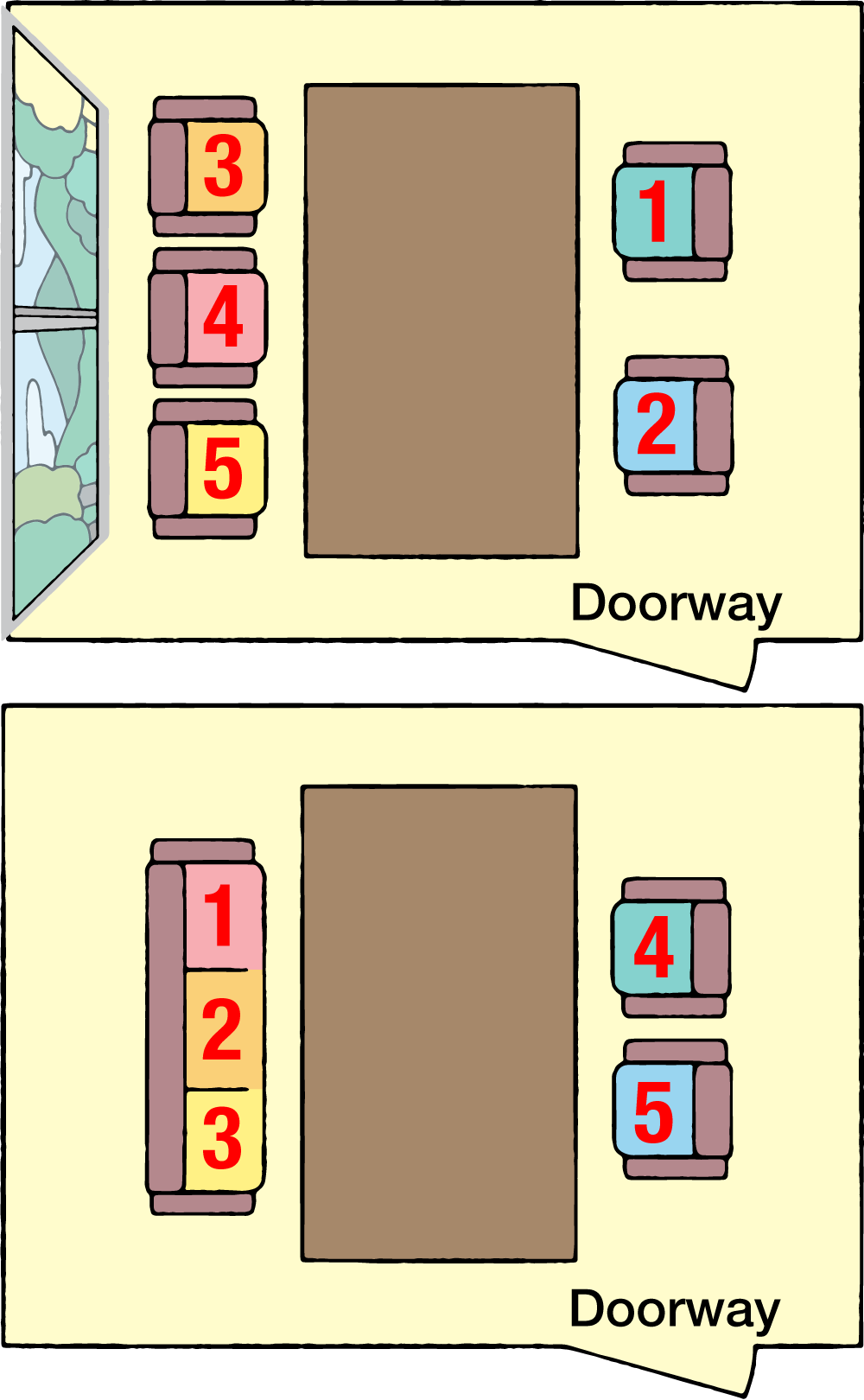
If there is a nice view from the window, it is acceptable for the top seats to be on the doorway side of the room (top illustration). Even if there is only one guest, that person occupies the sofa (bottom illustration). (© Pixta, edited by Nippon.com)
Reception room furniture usually consists of a sofa for guests, with two armchairs opposite. The guest is seated on the sofa. While it may feel uncomfortable having an entire sofa to yourself, your host wishes you to have plenty of space to relax, so accept the hospitality in the spirit in which it is offered.
While waiting for your host, sit on the sofa’s edge so that you can stand immediately to exchange greetings. Simply stand briefly, so that your host will not feel embarrassed at having made you stand for a long time.
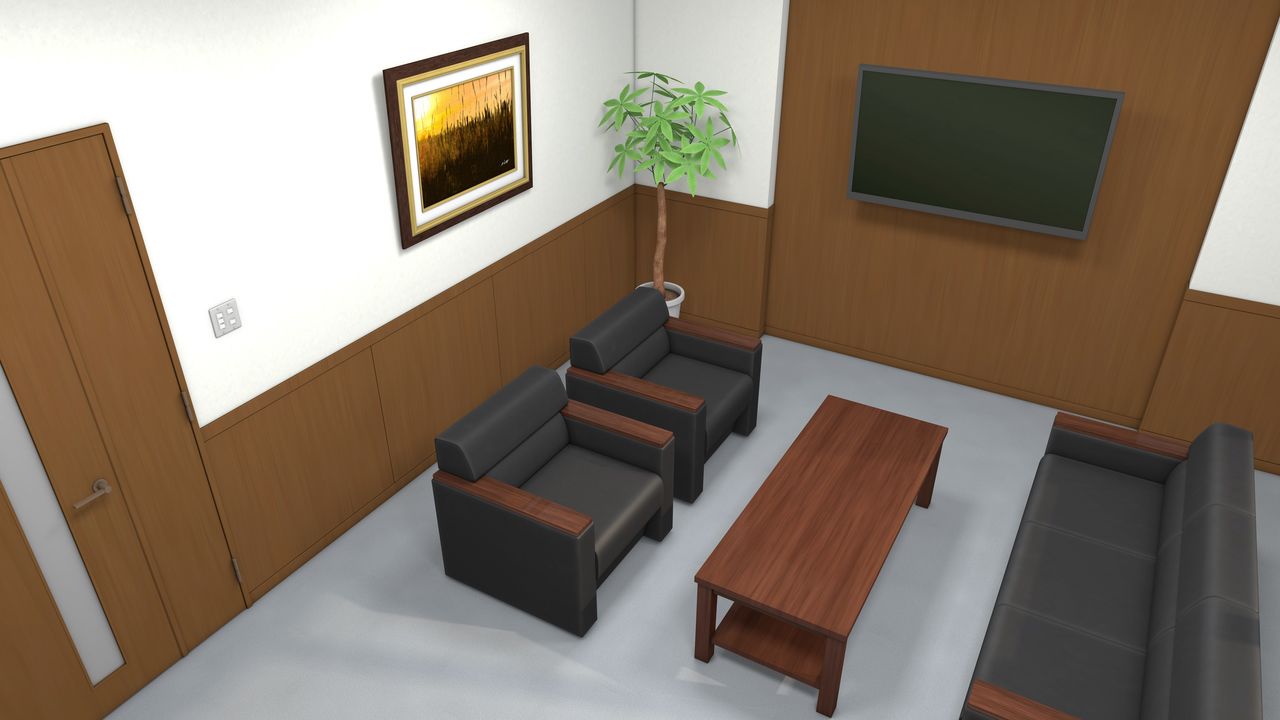
In a reception room, the sofa is positioned farthest from the doorway, and an artwork or indoor plant is placed in view of the guests. (© Pixta)
In Elevators and Taxis
Elevators being a modern convenience, they follow the Western rule of giving priority to the right. In an elevator, the top spot is the rear right-hand corner, with the next spot the rear left-hand corner. Following the right-hand-side rule, the spot for the most junior member of the party should be to the left of the elevator door, although it is acceptable for that person to occupy the spot immediately to the right of the door in order to operate the elevator buttons.
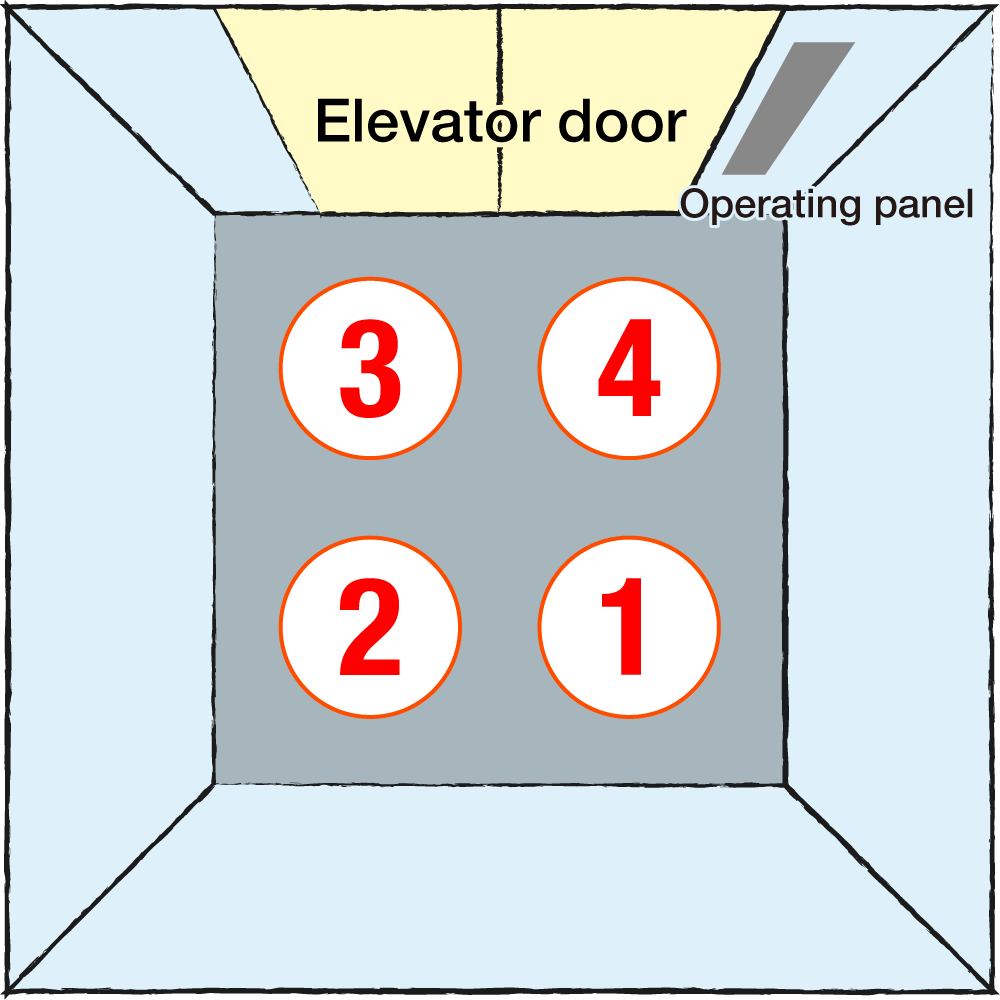
Someone in the host party stands where they can push the elevator buttons. (© Pixta, edited by Nippon.com)
The same applies when several people board an elevator. A handy rule of thumb is that the most important individual occupies the right rear of the car, and the most junior person positions him or herself by the operating panel.

Rather than repeatedly jabbing the “open” button, use a hand to hold the door open to avoid having it close unexpectedly while someone is alighting. (© Pixta)
Lastly, a word about seating etiquette in a vehicle. Since automobiles are also a modern convenience adopted from the West, the top person occupies the right-hand spot.
This means that the right rear position is reserved for the most important person in the party. Having three people in the back seat makes for cramped quarters, so the lowest-ranking person occupies the middle seat.
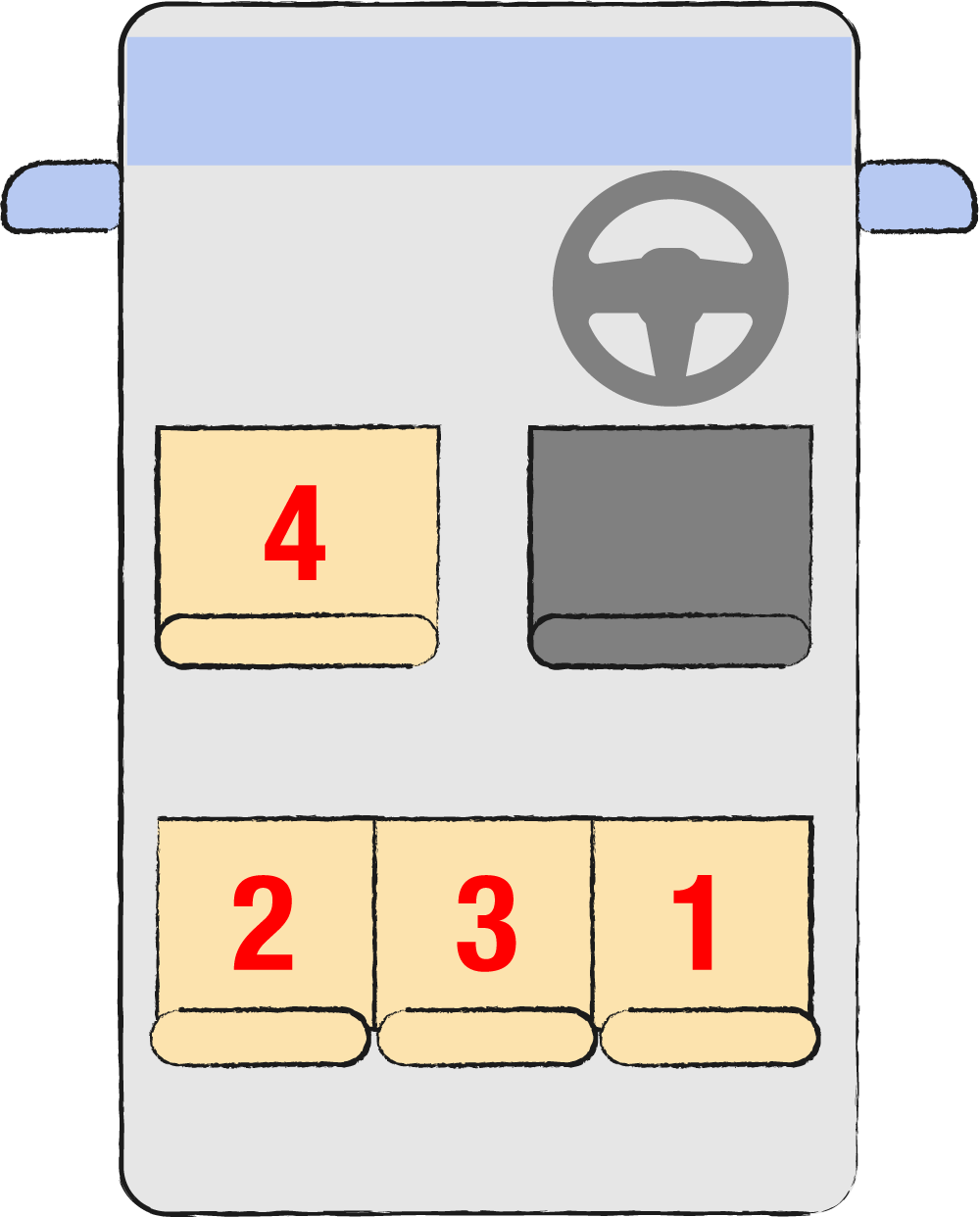
Seating order in a taxi or hired car. (© Pixta, edited by Nippon.com)
Since road traffic in Japan moves on the left, passengers board through the left side of the vehicle. Following the usual rule giving precedence to the right, this means that the most important person must slide over the seat to the far right. If that person is elderly, injured, or wearing a kimono, it may be helpful to suggest that they sit on the left instead.
The primary consideration of etiquette is to ensure safety and comfort. Adapting rules as circumstances dictate always helps build good personal relations.

When boarding a taxi with just one other person, it is considerate to ride in the front passenger seat to give the driver directions or pay the fare smoothly. (© Pixta)
(Originally published in Japanese. Text by Nippon.com. Supervised by Shibazaki Naoto, associate professor at Gifu University, who specializes in manners education from a psychological perspective, works to guide etiquette educators, and is an instructor in Ogasawara-ryū etiquette. Banner photo © Pixta.)
